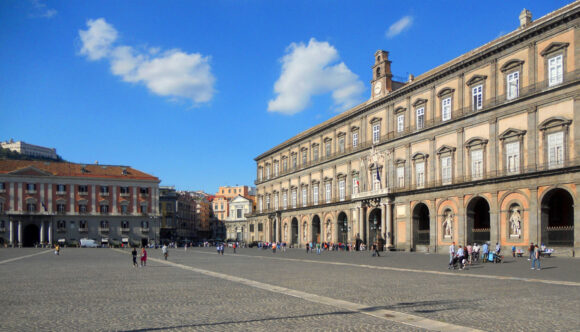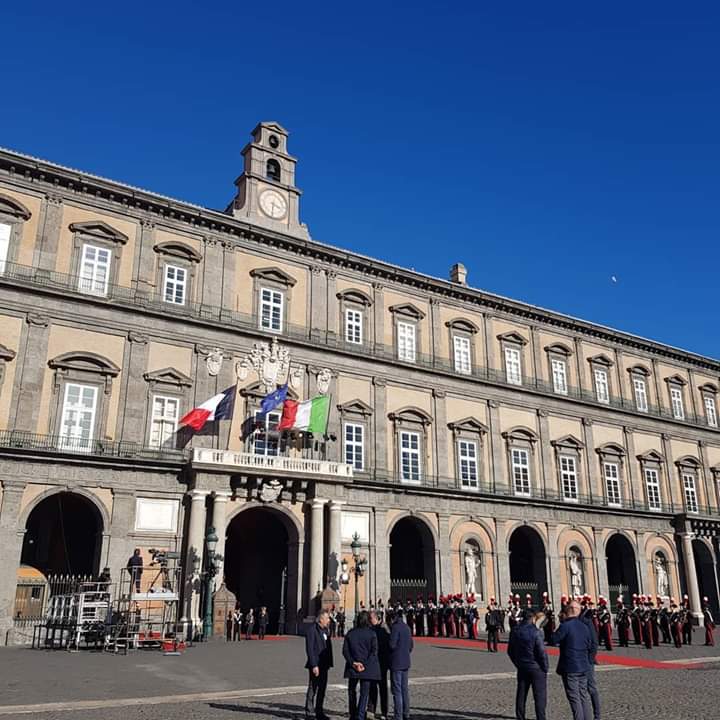Palazzo Reale di Napoli
Facing the Basilica of San Fransesco da Paola on the east side of Piazza del Plebiscito lies the Palazzo Reale di Napoli, one of the four residences used by the Bourbons of Naples during the Kingdom of the Two Sicilies, as well as one of the most important art places in the city, a major tourist attraction today. The royal palace represented for over three centuries the center of power in Naples and throughout southern Italy. Its gray and red mass overlooking Piazza Plebiscito and the gulf, constitutes a real gateway to the city towards the sea.


Inside this imposing and austere building there are a series of arcades, courtyards and gardens that lead to spaces once occupied by the court and by the many service functions of a palace. Today those functions have been replaced by a museum and other cultural institutes (the National Library, the Teatro di San Carlo). In the Historic Apartment paintings, marbles, stuccos, tapestries and precious furnishings tell the lives of the occupants of the Palazzo and with them many salient moments in the history of Italy and Europe.


The Palace, due to its very position, naturally lends itself to being the beating heart of the city. The museum’s mission is precisely to encourage dialogue with the urban context as much as possible, rediscovering the role of a sumptuous palace, created to amaze the visitor as an image of power itself. From a monument of absolutism to a place of aggregation and cultural forge, the Palazzo spans the centuries telling its story and challenging us to question ourselves about our own identity.



The ancient core of the whole building is the Appartamento di Etiquette on the main floor. It has been open to public visits since 1919, when it was included among the State Institutes of Antiquities and Art. It is composed of the three antechambers that lead to the Throne Room, among which the Diplomatic Room stands out, so called because the retinue of visiting diplomatic delegations stopped there, dominated by the ceiling by Francesco De Mura, depicting the Royal Genius and the Virtues of Charles of Bourbon and Maria Amalia of Saxony .



The Throne Room, with a neoclassical ceiling, designed by Antonio De Simone, with Allegories of the twelve provinces of the Kingdom of the Two Sicilies , preserves the throne of the late Bourbon period (1850) and is set up with portraits of court characters, kings, princesses and queens. The Apartment of Label houses the Sala degli Ambasciatori, an ancient gallery, which preserves the original fresco decoration of the seventeenth century with the representation of the Fasti of the House of Spain , made by Belisario Corenzio. MORE

